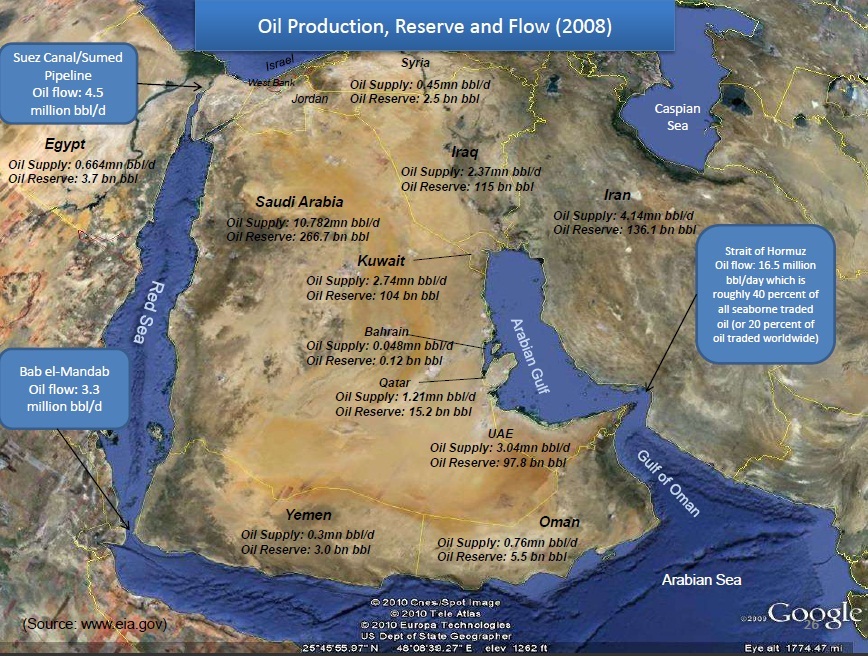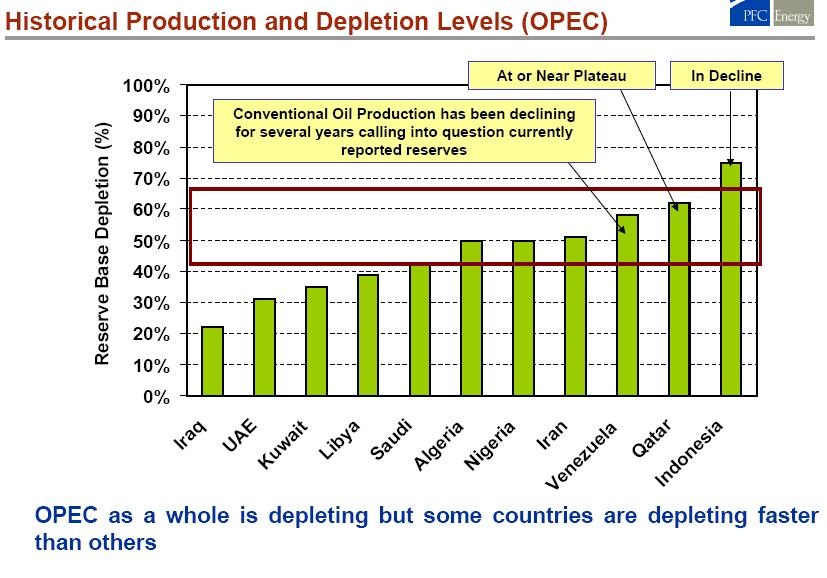The Australian Financial Review (6/4/2010) published my following letter:
 Middle East war games and our oil vulnerability
Middle East war games and our oil vulnerability
In the last days the New York Times had 2 articles on war games in the Middle East involving Israel, the US and Iran[1]. They describe a February 2010 report by the Brookings Institution entitled “A crisis simulation of an Israeli strike on the Iranian nuclear program” and a March 2010 report by the Center for Strategic and International Studies (CSIS) entitled “Options in dealing with Iran’s nuclear program”[2].
The CSIS document contains a reference to an October 2006 report by the National Academy of Sciences about Iran’s possible oil export extinction by 2015[3], which is in line with predictions of the late Dr. Bakhtiari who gave testimony to the Senate inquiry on oil supplies in July 2006 in Sydney’s Parliament House[4]. The war game simulation involved Iranian retaliatory attacks on Saudi oil installations and the mining of the Straits of Hormuz.
What does that all mean for Australia? If something were to happen in the Middle East we would be hard hit as we do not have any Strategic Oil Reserve. This problem goes back to Howard’s 2004 energy white paper which did not consider it necessary[5]. In fact, we are in violation of IEA’s rules of keeping 90 days of net oil imports as reserve[6]. Unfortunately, under the Rudd government, nothing has changed[7]. Australia’s oil import situation is precarious anyway as our own crude oil production will be declining by a whopping 85% over the next 10 years, according to a recent report by Geoscience Australia[8]. Do we need a (hopefully temporary) disruption to wake up our government?
——————-
The above map from the CSIS report (Centre for Strategic and International Studies, Washington) shows the oil supply choke points in the Middle East. Please note that the reserves quoted are overstated. CSIS should actually know better. PFC Energy did a presentation to the CSIS in September 2004, showing depletion levels in OPEC countries.
http://www.ecolo.org/documents/documents_in_english/oil-forecasts-04.pdf
This graph implies that OPEC had – at that time – only 506 Gb instead of 882 Gb (BP Statistical Review)
More details can be found in these previous posts:
12/11/2009
“Key oil figures were distorted by US pressure, says whistleblower”
http://www.crudeoilpeak.com/?p=564
18/10/2009
OPEC reserves revisited
http://www.crudeoilpeak.com/?p=355
[1]Imagining an Israeli Strike on Iran http://www.nytimes.com/2010/03/28/weekinreview/28sangerintro.html
Agencies Suspect Iran Is Planning Atomic Sites
http://www.nytimes.com/2010/03/28/world/middleeast/28nuke.html?pagewanted=all
[2] A Crisis Simulation of an Israeli Strike on the Iranian Nuclear Program
http://www.brookings.edu/reports/2010/02_iran_israel_strike_pollack.aspx
Options in Dealing with Iran’s Nuclear Program
http://csis.org/publication/options-dealing-iran%E2%80%99-nuclear-program
[3] The Iranian Petroleum Crisis and United States National Secuity
http://www.pnas.org/content/104/1/377.full
[4] Dr. Bakhtiari’s testimony to a hearing of the Senate Inquiry on future oil supplies in July 2006
http://www.aph.gov.au/hansard/senate/commttee/S9515.pdf
[5] Howard’s energy white paper, page 126 http://pandora.nla.gov.au/pan/10052/20050221-0000/www.dpmc.gov.au/publications/energy_future/docs/energy.pdf
[6] IEA Response System for Oil Supply Emergencies
http://www.aip.com.au/pdf/fs_response_system.pdf
[7] See chapter 2.3 ACIL Tasman’s Liquid Fuel Vulnerability Asessment
[8] Australian Energy Resource Assessment
https://www.ga.gov.au/products/servlet/controller?event=GEOCAT_DETAILS&catno=70142
Australian crude oil production to decline 85% over the next 10 years
http://www.crudeoilpeak.com/?p=1243
.


